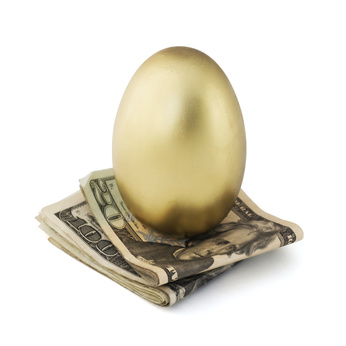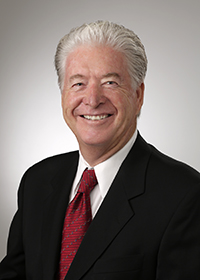Traditional 401(k) Plans vs. Roth 401(k)s
Why Give Employees a Choice?

Do you sponsor a 401(k) plan for your employees? Many of our clients do. But less than half of American companies with under 100 employees do 1. If you’re one of those, your cost of doing business in 2017 is set to rise.
A talent shortage persists. In a report by Deloitte, 79 percent of manufacturing companies face difficulty filling positions due to a skills gap. Roughly the same percentage was reported in consumer products (78%), technology (77%), healthcare and business services (both at 74%). All these sectors reported ‘major talent shortages.’
To add to the challenge, millennials (born between 1982 and 2004) represent the majority of the workforce today. And they’re a delightfully contrarian lot.
Some 75 million strong, millennials expect more from work than previous generations. They’re extremely wired, accessing terabytes of information to make more informed decisions. They’re attracted to brands they love and employers who care. And they want great benefits.
No, they expect great benefits.
Your Talent Magnet
If you do not offer a fully competitive 401(k) plan to your employees, you will be hamstrung to attract and retain the top talent you need to grow your business. When a prospective hire considers whether to work for you or someone else, the package of benefits you offer will make the deciding difference.
In a nation suffering from retirement insecurity, workers naturally look to their employers for assistance. A 401(k) plan proves you value your talent and what it brings to the company. What’s more, retirement benefits rank second behind health insurance in importance to your people. Besides, it costs far less to offer benefits designed to keep good people than to find, hire and train new ones.
“If employers would really calculate in a systematic way how much turnover costs to them, they would pay more attention to clever ways of compensating workers, like adding a 401(k) account to their benefits,” says Teresa Ghilarducci, nationally recognized expert in retirement security. “It doesn’t really cost that much, because the 401(k) contributions are flexible, employers can stop them whenever they want, most of the contribution can come from their employees, and employees really like them.”

A 401(k) plan offers tax advantages for both the employer and employee. Many small businesses can qualify for a $500 tax credit to offset the cost of operating a 401(k) plan for each of the first three years. Plus, when the employer matches employee contributions, those sums are also tax deductible. Brightscope tells us that more than three-quarters of sponsors make matching contributions to their plans. Little wonder, then, by the end of Q1 2016, Americans held $4.8 trillion in 401(k) plans.
But here’s the sad news.
Remember that roughly half of Americans do not work for an employer that sponsors a retirement savings plan. And consider this: “When you add in people who did not participate in a plan offered to them or who were not working, a staggering 68% of working-age people (25-64) did not participate in an employer-sponsored plan,” reports Forbes.
The Lucky Ones
Progressive employers give employees a leg up on retirement security with a 401(k) plan and offer a choice between a traditional 401(k) plan and a Roth 401(k) plan. Fifty percent of employer defined contribution plans offer a Roth 401(k), according to Aon Hewitt.
Here’s the great news: Your employees do not have to choose between one or the other. There’s room for both. By understanding the differences between a traditional and Roth 401(k), you can help your employees save on taxes now and later. Let’s unpack these differences.

The Traditional 401(k) Plan
If you choose a traditional 401(k), you make contributions on a pre-tax basis. You pay taxes when you withdraw these funds at retirement. Because your contributions are not counted as income, your tax bill could be lower today. And, you enable your retirement assets to grow on a tax-deferred basis. Because you are taxed on future withdrawals, in effect, a percentage of your 401(k) balance belongs to the IRS.
Inside Roth 401(k) Plans
The after-tax Roth 401(k) plan does not entitle you to an upfront tax break, like the traditional 401(k), because you pay taxes on your account contributions at the time they occur ("today"). As important, withdrawals are not required and some plans could stipulate in plan documents that withdrawals occur at a defined “retirement age.” However, all accumulated growth and all qualified future withdrawals are tax-free. With your taxes already paid upfront, no tax is charged at retirement withdrawal. The plan your employees select will depend on their individual situations and retirement goals.
What to Consider
At its core, the decision to go Roth or traditional is somewhat of a calculated risk. You are betting on where tax rates will land in the future. Who can know? You can review historical tax rates, take the current political situation into account, then make a guesstimate based on these factors:
- Your anticipated income growth over your career
- Your current tax bracket
- Your expected tax bracket at retirement
If taxes are your employees’ prime concern, they may prefer a traditional 401(k) and defer taxes (on their higher income now) until retirement when lower income and a lower tax bracket is more likely. Let’s say you’re at the beginning of your career with taxes deducted from your paycheck regularly; it makes sense to use this after-tax income to contribute to a Roth 401(k). The contributions grow tax-free, and you will not feel the pain of taxes at retirement.
What if your peak earning years come later in your career, and you find yourself in a higher tax bracket nearing retirement, the traditional 401(k) plan becomes a smart choice.
Alternatively, what if you befall a medical emergency or illness, you can tap a good-size portion of your Roth 401(k) to pay for the unexpected without the tax burden of a traditional 401(k).
Do the Right Thing
We know you care whether the investment lineup in your plan is well diversified. Why not help your employees diversify their tax exposure, as well? By offering both a traditional and a Roth 401(k) plan, you produce a trifecta of advantages. Participants in the plan can lower a certain amount of current taxable income, contribute to a diversified retirement plan, and gain some insulation against future tax hikes.
As long-time fiduciaries, we are duty-bound, and honor-bound, to do the right thing by our clients. That’s why we recommend offering both plans to your employees.
No better feeling exists than the experience of doing the right thing.
If we can be of service, please contact me below. My door is always open.
To Your Financial Freedom,

Rick Roush AIF®, CPFA
Roush Investment Group
O: 559.579.1490 F: (559) 490-2015 C: (559) 285-3318



